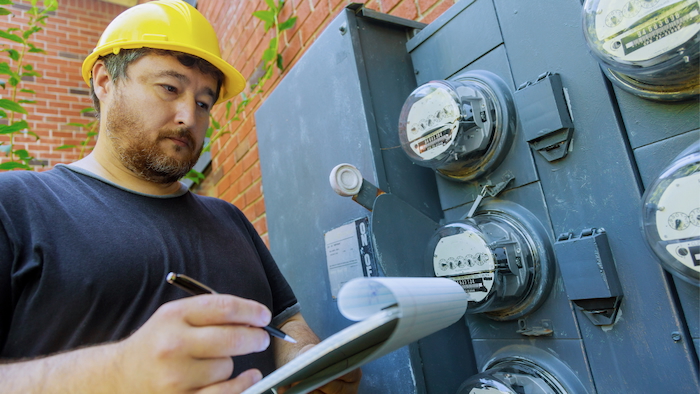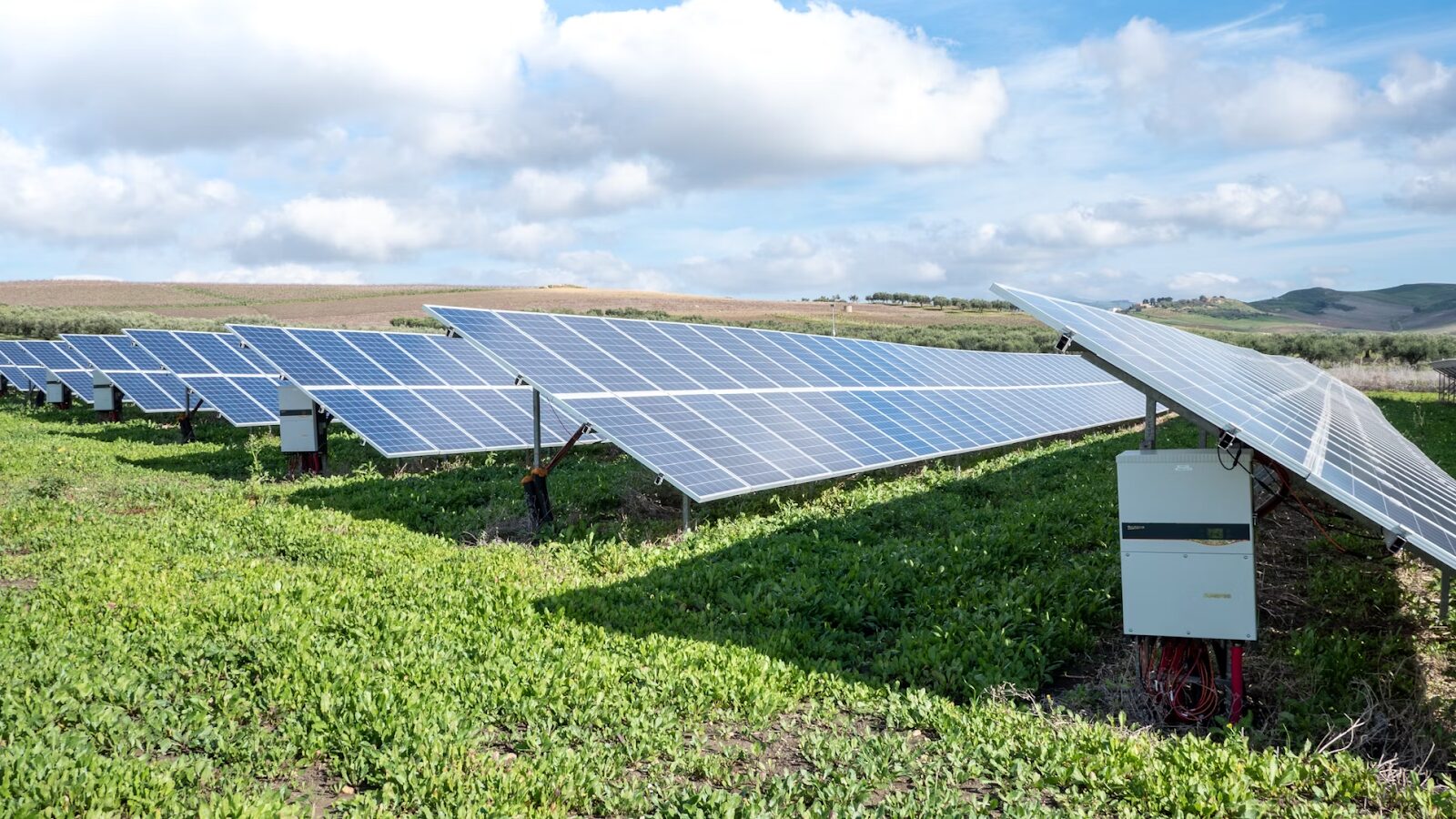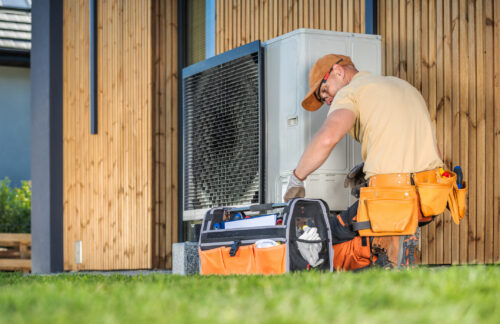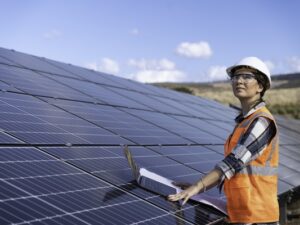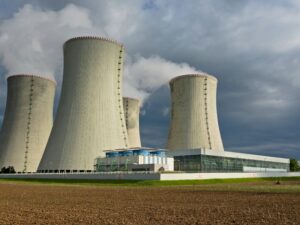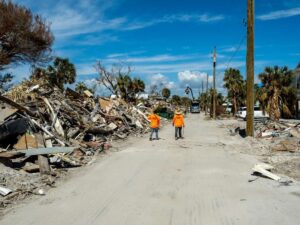How clean energy tax credits can lower your energy bills
by Elissa Tennant
One of President Donald Trump’s first actions in office was to declare a “national energy emergency” in the U.S. In the executive order outlining this declaration, the White House stated high energy prices are a result of America’s reliance on foreign energy and hostility from outside nations, and that these high prices indicated an energy emergency.
But in reality, are we actually in an energy crisis?
An energy crisis typically involves supply shortages, high prices, or threats to infrastructure. It’s usually driven by grid instability, coal plant closures, fuel shortages, and growing power demand. Both sides of the political aisle have argued for and against the term “energy crisis” with no clear conclusion.
At the very least, Americans agree there is a real and growing demand for electricity that we need to meet to avoid rising electricity rates and destabilized power supply. We need to build energy that is affordable, fast to deploy, and pushes toward energy independence while lowering household expenses for everyday people. So, how do we do that?
Why is my electric bill so high?
The national energy emergency declaration is correct in stating that energy prices are rising. Homeowners (and renters) are seeing record-high electricity bills. Causes of these price spikes include:
- Rising fuel costs (especially natural gas).
- Rising costs to build energy infrastructure, stemming from inflation, tariffs, and high interest rates.
- Increased demand due to extreme weather events, especially heatwaves.
Regional causes are also contributing to high prices. For example, in California, measures to harden against and recover from climate-worsened wildfires are also driving up electricity rates. Frustration from rising prices is driving many people to seek out and consider new energy solutions.
The best solution to encourage energy independence and lower prices? It’s simple: Encourage more clean energy and efficiency upgrades. Clean energy tax credits make green upgrades more affordable while supporting the fight against climate change.
Clean energy is the cheapest source of energy
The cost of clean energy has come down dramatically over the last decade. As clean energy deployment grows, companies learn how to bring down costs through efficiencies and technological advancements.
Solar and wind are now the lowest-cost sources of new electricity generation in many parts of the U.S., even beating out natural gas and coal. These renewable energy sources are good for the climate, air, water, and the health of American citizens. Once installed, they have zero fuel costs, which means zero surprise price hikes.
Federal and state incentives (mainly tax credits) are encouraging people and companies to invest in renewable energies. As a result, the economics of energy now favor clean energy, which can generally be deployed faster than fossil fuel-based energy systems. With these credits in place, grid operators and companies are now incentivized to choose clean energy sources that are cheaper and faster to build.
Clean energy tax credits are critical to getting new clean energy solutions implemented at the speed and scale we need. Implementing these sources of energy benefit us individually and collectively, both economically and climate-wise.
Clean energy solutions that could lower your energy bills
While it’s important that companies invest in clean energy on a larger scale, there are steps individuals can take as well. There are clean energy tax credits available that make it cheaper for people to buy the clean energy upgrades they need (like heat pumps, induction stoves, and electric vehicles). The following options, backed by incentives, help put America on the path to a full transition to clean energy while avoiding future energy emergencies.
Invest in home solar panels
Home solar panels reduce or even eliminate electricity bills over time. And with net energy metering, households have the option to sell excess power back to the grid at a profit.
Install an electric heat pump
Heat pumps use less energy to heat and cool your home. They are an ideal solution for areas with extreme temperatures. Heat pumps do some of their best work in very hot summers and freezing cold winters.
Weatherize your home
“Weatherizing” your home is an umbrella term for small upgrades that can improve your home’s energy efficiency. It includes activities like getting an energy efficiency assessment, improving insulation, upgrading windows and doors, and just adjusting ventilations systems.
For more clean energy incentives available in your state, check out DSIRE’s Database of State Incentives for Renewables & Efficiency®.
Tax credits make clean energy affordable for everyone
Clean electricity tax credits aren’t just for homeowners. While they help everyday people afford energy upgrades, they also promote the supply of clean energy in general.
Recall that, unlike fossil fuels, solar and wind power have no fuel costs. Once they’re built, the energy they produce is much cheaper. Tax credits make it easier for developers to build critical large-scale wind and solar projects, which lower electricity rates.
The more clean energy we build, the less we rely on volatile fossil fuel markets — which means fewer price spikes during global crises or extreme weather. According to energy analysts, regions with more renewables on the grid often experience more stable (and lower) electricity prices over time.
Expanding the supply of clean energy on the grid also helps push down wholesale electricity prices, which can lower the rates utilities charge consumers. Utilities can pass on the savings from cheaper clean electricity to ratepayers, especially in states where regulatory bodies require cost-based pricing.
Saving money while saving the planet
Clean energy is a smart, long-term investment, allowing us to save money while saving the environment. An abundant supply of renewable energy increases supply on the energy grid, reduces air pollution, and creates less of the carbon pollution that is overtaking the planet. At the same time, it increases our energy supply and reduces demand, saving you money on your energy bills.
With the right policies in place, any discussion of a “national energy emergency” can become a thing of the past. America has the potential for plenty of affordable wind, solar, geothermal, and nuclear power—we just need to build the political will to create and deploy this energy.
How to take action on climate change NOW
To move the U.S. to a clean energy economy, individuals, businesses, and policymakers collectively must work together and invest in and support clean energy initiatives.
These long-term solutions are what will truly protect the health of our climate, but you can also take action right now:
✅ Volunteer for the environment locally
✅ Talk to your friends and family about climate change
✅ Electrify your home with clean energy
✅ Write or Call Congress and let them know which clean energy policies you support
✅ Attend one of our climate change conferences this year
✅ Spread the word on social media
✅ Support candidates and policies that advocate for clean energy infrastructure and permitting reform
✅ Share this blog
✅ Join one of our weekly Informational Webinars to learn more about Citizens’ Climate Lobby and how you can get involved.
We welcome students, seniors, and everyday citizens to join us and thousands of volunteers around the world in our collective goal of climate action!

